SUMMARY
This is AI generated summarization, which may have errors. For context, always refer to the full article.
![[OPINION] Reckoning with the Marcoses](https://www.rappler.com/tachyon/2021/12/TL-marcos-return-ls.jpg)
Recently, a Facebook “friend” tagged me on a conversation about the Marcos comeback in the Philippines. His friend was convinced that my uncle, former president Fidel V. Ramos (FVR), was responsible for the return of the Marcoses into the country.
Indeed, it had been my late mother, Senator Leticia R. Shahani, who had been given the unpalatable task by my uncle of bringing Marcos’ body back to Ilocos Norte in 1993. The friend implied that FVR had done so because he and former president Ferdinand E. Marcos had been second cousins, blood being thicker than water, despite the deep ideological and political differences between them.
Observing the self-righteous tirade, I thought: how did we get from EDSA to the vexed, historical moment in which we now find ourselves? How to take stock of a public culture that once virulently spat out a dictator and his family – dubbing it a revolution – only to embrace that plunderer’s son – Bongbong Marcos, my third cousin, whose record in office has certainly been less than stellar – a mere 35 years later? What does this say about our sense of historical memory and gravitas as Filipinos?
To begin with, there was former president Cory Aquino. While she adamantly resisted the return of Marcos’ body to the Philippines, she was also the first post-EDSA leader to publicly forgive him (“We forgive the sinner but not the sin”). But what the numerous coup attempts during her term also reflected was the presence of a still-substantial Marcos constituency, particularly in Region 1. FVR’s rationale for quelling these uprisings at the time was a desire to unite the country. During his own presidency, Ramos calculated that returning Marcos’ body to his Batac hometown (but not the Libingan ng Mga Bayani or Cemetery of Heroes) would placate (rather than isolate and potentially strengthen) the strongman’s intensely loyal following.
In contrast, former Presidents Erap Estrada and Gloria Macapagal-Arroyo initially favored a hero’s burial for Marcos, only to eventually backtrack in the face of rising public opposition. For his part, President Noynoy Aquino, who refrained from making public pronouncements on the matter, quietly opposed honoring Marcos, who had after all been the nemesis of his late father, Ninoy Aquino.
But the latter’s assassination in 1983 – and its possible mastermind – remains one of the deep, unanswered questions in Philippine history. Eduardo “Danding” Cojuangco remains a primary suspect (among others) because of his close political ties to Marcos, on the one hand, and to his cousin, Cory Aquino, on the other. But while the first Aquino president denounced him on more than one occasion, her son Noynoy was far more conciliatory towards his uncle. Thus the heady reform agenda of land reform, wealth redistribution and the remuneration of coconut farmers during the second Aquino presidency became largely stymied by a relationship that was at once personal, economic and political.
Indeed, political factions officially at odds with one another – such as the Marcos, Ramos, Cojuangco, Araneta, Roxas and Buencamino clans, to name a few – simultaneously exhibit the ties that inextricably bind them. And this phenomenon has not been limited to the political fray: throughout the post-EDSA years, social and economic elites continued to fawn over and fête the Marcoses in such spaces as the Cultural Center of the Philippines, Ayala Museum, Leon Gallery, Pinto Gallery, and Ateneo Art Gallery. Finally, the Marcos resurgence can also be explained by our educational system: that is, its colossal failure in conveying to future generations the dark chapters of martial law.
Failure of education
That young people have so swiftly forgotten the horrors of martial law under Marcos should come as little surprise. How could it be otherwise when curriculum development has almost never been a priority of Department of Education (DepEd) secretaries after EDSA?
During the Cory Aquino years, elementary school was universal, unlike high school, which became the agency’s focus. But this also led to the underfunding of elementary schools, which continued to experience shortages for decades. During the Ramos presidency, rolling out universal high school remained a priority. As Juan Miguel “Mike” Luz, former DepEd Undersecretary and academic dean, further observes, hosting APEC, addressing the water crisis and becoming a “tiger cub of Asia” were more pressing Ramos concerns, adding: “the Centennial celebration was not the right time to dig up a sordid past like martial law.” Worse, “the Erap (Estrada) years were lost years for DepEd. Brother Andrew (Gonzalez) wrote about this in his book An Unfinished Symphony. This was also a period when DepEd gained the reputation of being one of the most corrupt government agencies… (with) one of the largest procurement budgets” politicians could exploit.
In turn, Gloria Macapagal-Arroyo had a total of 6 secretaries of education during her 9 years as president. As an economist, she was far more concerned with funding shortages than with the quality of school curricula. But one department secretary, Edilberto “DJ” de Jesus, did begin talks with Maris Diokno, then vice president for academic affairs at UP, hoping to examine the history curriculum and school textbooks. According to Luz, the tentative findings of one project – a review of Grades 5 and 6 history textbooks (both public school and private), which included the martial law years – were that they were “poorly researched, poorly written and presented very little about martial law (with a lot more on Marcos’ accomplishments).”
I myself, as a former assistant secretary under Presidents Noynoy Aquino and Rodrigo Duterte, witnessed similar trends under two succeeding DepEd secretaries: Brother Armin Luistro and Secretary Liling Briones. The push for K-12 was a massive undertaking for Bro. Armin, involving the building of schools and classrooms, and the alignment of secondary and tertiary education. But the late President Aquino was more preoccupied with the short-term past (i.e., the Arroyo years) than with the Marcos legacy his parents had fought so hard against, deeming it time to “move on.”
Still, this quaint mixture of naïveté and hubris is less galling than Secretary Briones’ ongoing resistance to reviewing martial law depictions in school textbooks. Not only is she the last remaining member of the left-of-center coalition under President Duterte; she is, more to the point, a survivor of martial law herself, once having claimed that “she lost everything” during those years. To be sure, the past year has been spent on COVID-19, distance learning and political survival. But one would have thought that Briones, of all people, would champion the scrutiny of Marcos narratives in our history textbooks. I did, in fact, pointedly ask her about this in a UNESCO conference several years ago: she did not reply. About 6 months ago, I wrote again to Diosdado San Antonio, DepEd’s Undersecretary for Curriculum and Instruction, asking about “the depiction of martial law and its victims/survivors in our school textbooks.” To this day, I have yet to receive a reply.
Simply put, then, the Marcos comeback is a socially-incremental continuum in which many Filipinos – on different levels and registers – remain responsible. – Rappler.com
Lila Ramos Shahani is an Expert Member of the International Scientific Committee on the Interpretation and Presentation of Cultural Heritage Sites at the International Council on Monuments and Sites. She served in the Philippine government for 13 years under 3 presidential administrations (Corazon Aquino, Benigno Aquino, III and Rodrigo Roa Duterte), mostly with the rank of assistant secretary. In 2019, she chose to step down as Secretary-General of the Philippine National Commission for UNESCO because of ethical concerns related to the policies and practices of the Duterte administration. She is the author of several forthcoming book chapters on heritage and human rights in the Philippines.
Add a comment
How does this make you feel?
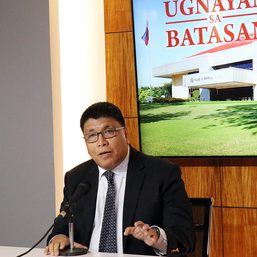
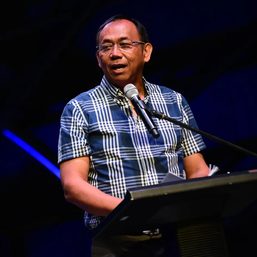
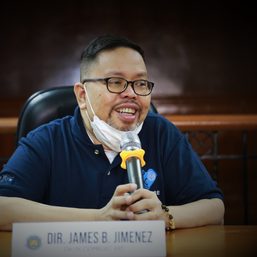
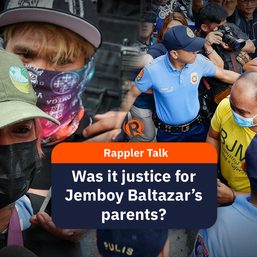
![[New School] Tama na kayo](https://www.rappler.com/tachyon/2024/02/new-school-tama-na-kayo-feb-6-2024.jpg?resize=257%2C257&crop=290px%2C0px%2C720px%2C720px)

![[OPINYON] Tungkol sa naging viral na social media conjecture](https://www.rappler.com/tachyon/2024/07/thought-leaders-conjecture-07262024.jpg?resize=257%2C257&crop_strategy=attention)



![[In This Economy] Marcos’ POGO ban is popular, but will it work?](https://www.rappler.com/tachyon/2024/07/thought-leaders-marcos-pogo-ban.jpg?resize=257%2C257&crop=255px%2C0px%2C720px%2C720px)
![[Rappler Investigates] POGOs no-go as Typhoon Carina exits](https://www.rappler.com/tachyon/2024/07/newsletter-graphics-carina-pogo.jpg?resize=257%2C257&crop=424px%2C0px%2C1080px%2C1080px)






![[OPINION] If it’s Tuesday it must be Belgium – travels make over the Marcos image](https://www.rappler.com/tachyon/2024/04/tl-travel-makeovers-marcos-image.jpg?resize=257%2C257&crop_strategy=attention)

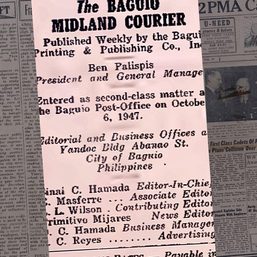
![[OPINION] Raised on radio](https://www.rappler.com/tachyon/2024/04/raised-on-radio.jpg?resize=257%2C257&crop=396px%2C0px%2C720px%2C720px)
![[Just Saying] Marcos: A flat response, a missed opportunity](https://www.rappler.com/tachyon/2024/04/tl-marcos-flat-response-april-16-2024.jpg?resize=257%2C257&crop=277px%2C0px%2C720px%2C720px)
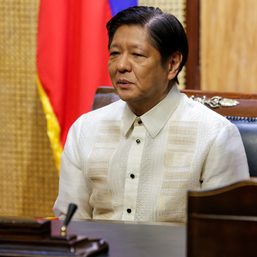


![[OPINION] From ‘Puyat’ to ‘Tulog’: Clout-chasing street signs disrespected history](https://www.rappler.com/tachyon/2024/07/gil-puyat-july-26-2024.jpg?resize=257%2C257&crop=389px%2C0px%2C1080px%2C1080px)


![[Time Trowel] Yamashita gold is a myth, and treasure hunting is not archeology](https://www.rappler.com/tachyon/2024/06/myth-yamashita-treasure-june-14-2024.jpg?resize=257%2C257&crop=435px%2C0px%2C1080px%2C1080px)
There are no comments yet. Add your comment to start the conversation.